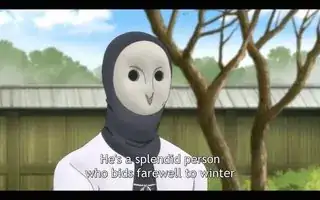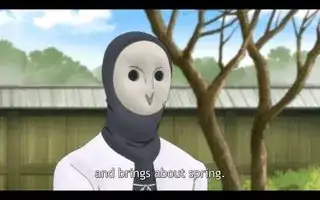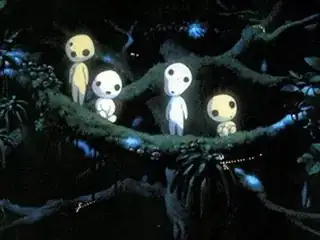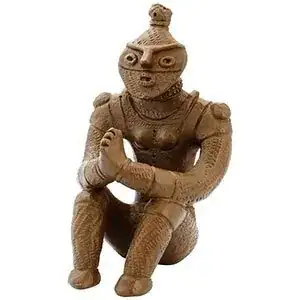In Episode 2 of Flying Witch, this rather strange looking fellow appears and terrorizes poor Chinatsu at the door.
Makoto explains that he's the Harbinger of Spring, some kind of nature spirit who ushers out the winter and ushers in the spring, like a fairy.
He's the Harbinger of Spring. He's a splendid person who bids farewell to winter and brings about spring. He's like the fairy of spring.
The series takes place in the modern day and the witches and magic are very Western in style. However, the Harbinger's clothing looks like traditional Japanese clothing (almost ninja-like).
His mask sort of reminds me of a cross between the kodama from Princess Mononoke and the style of Jomon pottery:
So, at least within the series, it seems like the Harbinger is supposed to be a traditional Japanese spirit. Is it based on any similar real-life legend or is it completely a creation of the series?








